A Walk Through Big Cypress
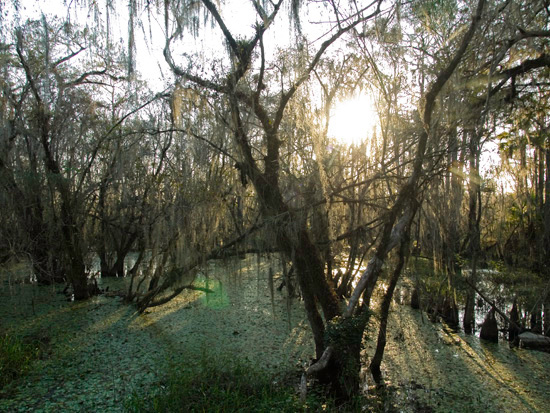
If you ever find yourself having to cross the southern portion of Florida, you’ll have the privelege of transecting the Florida Everglades. For most people, this involves taking I-75, aka “Alligator Alley”, which is four lanes wide and moves quickly when there isn’t a major hold-up (which is somehow more often that you’d like). Given that the flow of traffic usually moves in excess of 80 mph, it is quite unlikely that you will get to see any of its namesake reptiles.
A much more scenic route, that will actually reward you with an alligator or four, is to take the Tamiami Trail, aka Highway 41. The road is only two lanes, but still manages to cruise at a comfortable 60 mph with relatively few hold ups or traffic. The Tamiami Trail crosses Florida to the south of I-75, and takes you through a picturesque cross-section of the Everglades. Along the way you’ll find rest stops, nature trails, and Miccosukee-owned road side attractions that give this route great Floridian character.

The Kirby Storter Roadside Park along the Tamiami Trail is one such stop that will reward everyone, from the casual driver simply looking to stretch their legs, to dedicated nature enthusiasts and photographers. While primarily a rest stop, there is a relatively short (1/2 mile) boardwalk that winds its way first through savanna-like openness, then into a dark, swampy (often submerged) cypress forest, where it finally ends over a small pond.
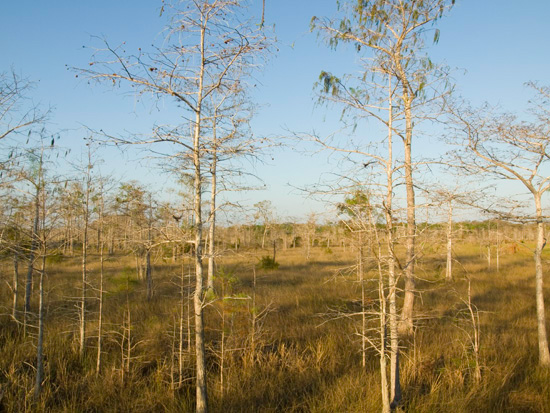
The view from the entrance to the boardwalk.
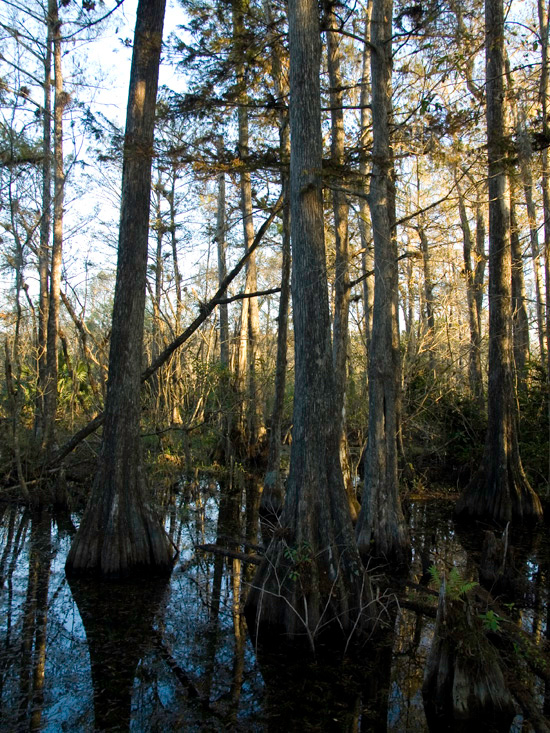
A view from the middle of the boardwalk trail into the cypress swamp.
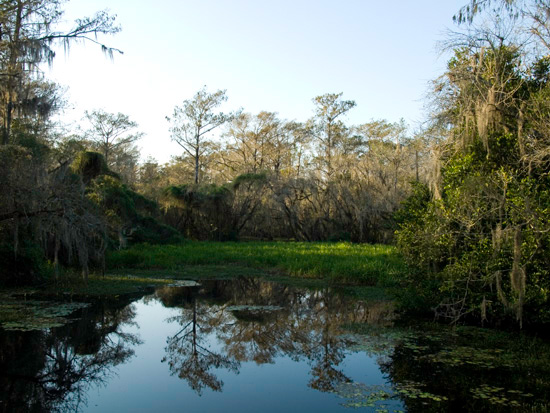
A view over the pond at the end of the boardwalk.
Whenever I make the crossing, I always make a point to stop at Kirby Storter and take some photos of the wildlife (which changes throughout the year.)
This white tail deer (Odocoileus virginianus seminolus) was about Key Deer size, so I’m guessing that it must be a fawn that recently molted out of its white “Bambi spots”.

White egrets (Ardea alba) are another common wading bird found throughout the Everglades and South Florida.

The wood stork (Mycteria americana) is an endangered species that can be relatively abundant in the pristine cypress swamp of Kirby Storter. These birds can be seen feeding alongside white ibis, egrets, and other predatory wading birds.
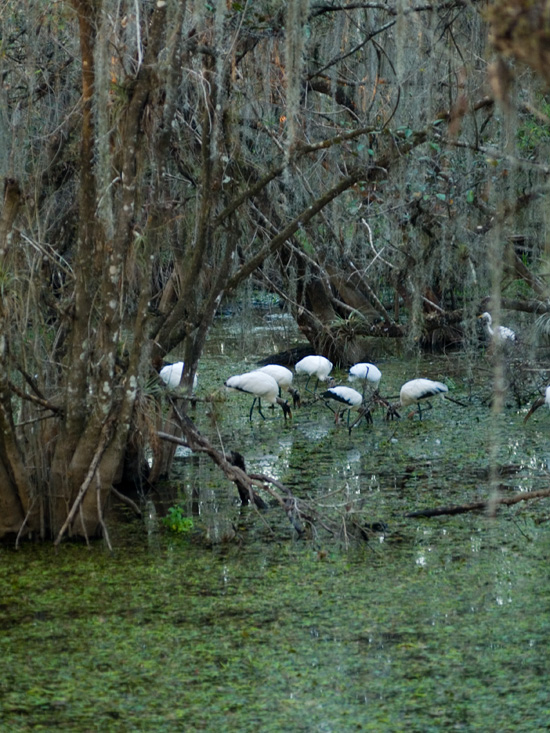
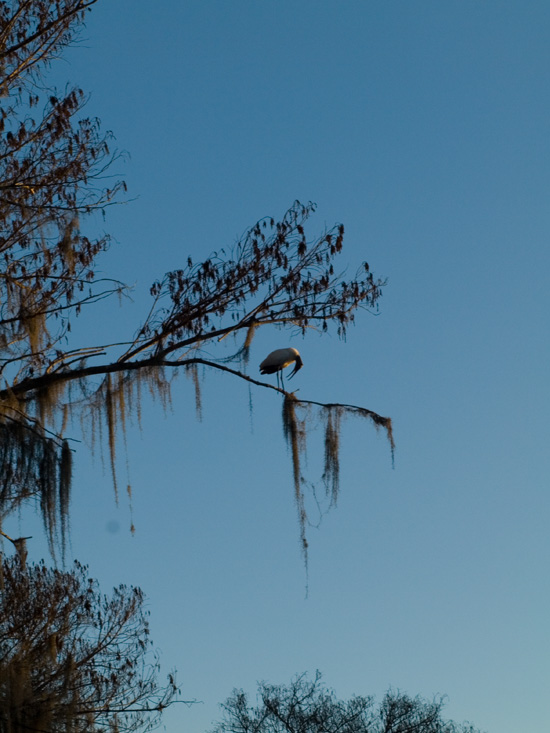
The anhinga (Anhinga anhinga) or snake-bird, is another common Everglades bird that is often seen drying out its plumage on tree branches and perches near the waters they ply for fishes. The anhinga (and its cormorant cousins) lack oils on their feathers, and therefore they are not waterproof and require air drying in order to avoid becoming a soggy mess.
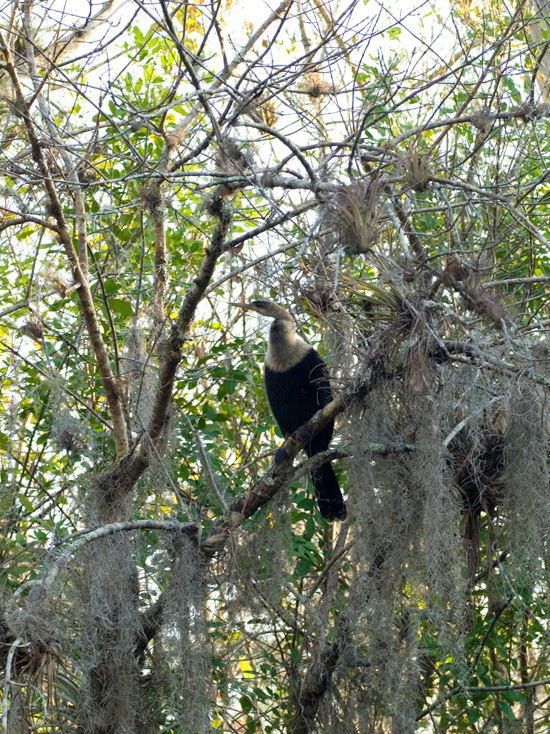
During the rainy season pretty much most of the area under the boardwalk is submerged.
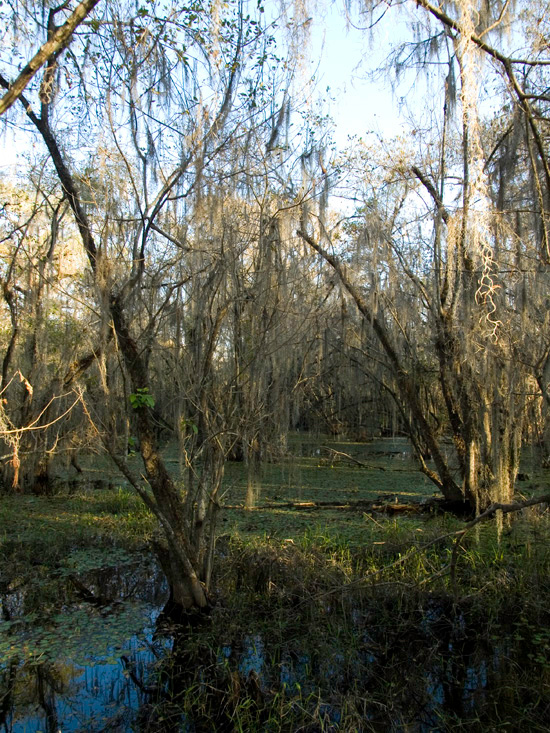
Freshwater planted aquarium geeks will be giddy with excitement over the vast stands of Ludwigia sp., Cabomba sp. (see below), Nymphoides sp., and Sagitaria sp., to name a few. It is interesting to see the morphology of these plants change throughout the year depending on whether they are growing submersed or emersed.
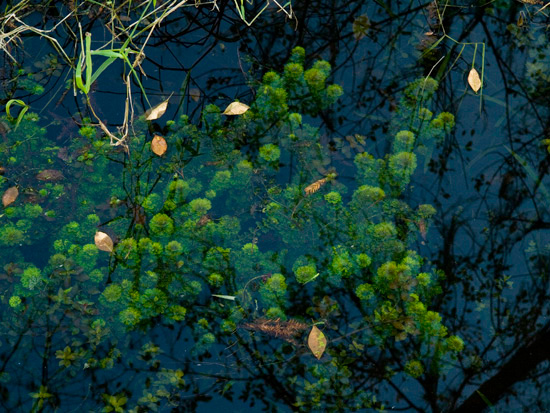
During the dry season, the water becomes more restricted to the area near the pond at the end of the boardwalk, but this also serves to congregate a variety of wildlife attracted to the verdant oasis. Thus the dry season (winter months) is the best time to see an alligator.
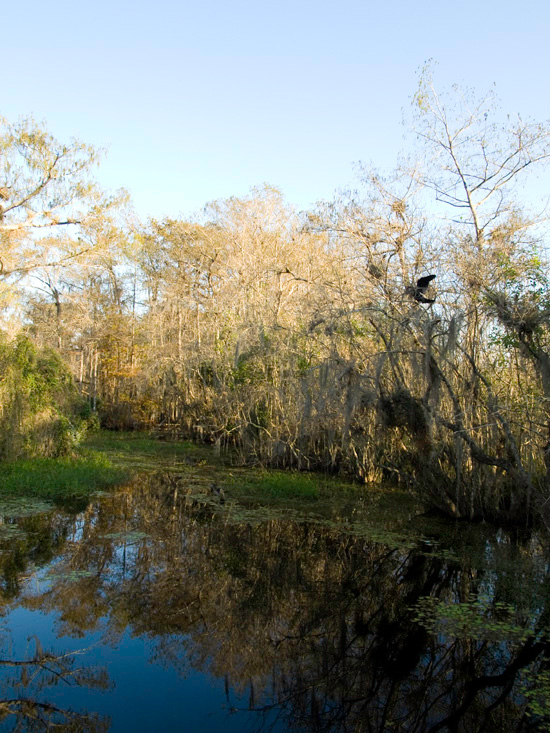
The best times of day to observe wildlife at Kirby Storter is just after dawn and before sunset. Early mornings are particularly nice due to the cool temperatures and lack of other human beings (it is rarely crowded, even during the daytime).

